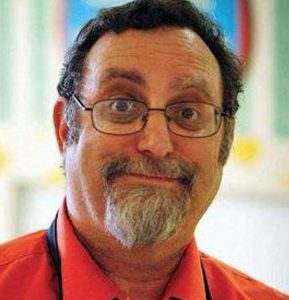Leavitt: Death on the Nines
By Irv Leavitt for Chronicle Media — January 1, 2019A suggestion for a New Year’s resolution: Maybe we should strive for a 2019 that is more peaceful than our past.
As inspiration, let’s remind ourselves of how unkind we’ve been to each other in some of those years of human history that also ended in nines.
1989
- A mentally challenged, suicidal drifter, 24, who had suffered childhood abuse, bought a cut-rate Chinese assault rifle, and used it Jan. 17 to fire into a schoolyard in Stockton, Calif., where he had played as a boy. The 24-year-old killed five children of the predominantly Southeast Asian school, and wounded 32 others. He had previously told associates that people from Vietnam and Cambodia were stealing American jobs.
- In February, the Soviet Union ended its decade-long war of occupation in Afghanistan, which took almost 15,000 Soviet lives and at least 75,000 lives of the Afghani opposition. Civilian deaths are estimated in the hundreds of thousands. The primary sponsor of the opposition, with billions worth of weapons and training, was the United States.
- The city of East St. Louis had a murder rate for the year of over 1 1/3 per 1,000 population, evocative of a war zone. The city of 47,430 reported 63 homicides. Chicago had a rate of less than one-quarter of a homicide per 1,000, but there were still a lot of people killed there — 742.
- In Chicago’s Logan Square neighborhood, a gang member, 22, realizing he was likely to be shot at by rivals in a passing car, grabbed a teenager and used her as a human shield. Maria Gonzales, 16, was shot six times. The shooter and an accomplice in the car were sentenced in 1991 to 25 years in prison for Gonzales’ murder. The gangster who put her in harm’s way was not charged.
- On June 4, Chinese troops storm a peaceful Demographic Movement protest in Beijing’s Tiananmen Square, firing indiscriminately into the crowd, killing hundreds.
1999
- A pair of Columbine High School students with transparent violent tendencies invaded their Littleton, Colo., school, killing 12 students and one teacher, and then themselves, on April 20. They left 21 injured, and at least two people committed suicide in the aftermath.
- On Sept. 15, a 47-year-old man shot 15 people in Wedgwood Baptist Church in Fort Worth, Texas, killing seven. His violent tendencies had previously frightened his neighbors. He told a newspaper shortly before the shooting, “I want someone to tell my story; no one will listen to me; no one will believe me.” He committed suicide at the scene.
- On July 29, a Stockbridge, Ga., man killed his wife and his two children from a previous marriage, then killed 12 people and wounded 13 at two day-trading firms where he had previously worked. He committed suicide as police closed in. He was suspected of killing his first wife and his mother-in-law in 1993, but wasn’t charged.
- A Washington State man who said he was making “a wakeup call to America to kill Jews,” shot five people at a Los Angeles Jewish Community Center Aug. 10, but they all survived. He then murdered a mail carrier he thought was Hispanic, and turned himself in.
- A Honolulu photocopier service technician with a large gun collection had for years told fellow employees that were he to be fired, he might kill some of them. On Nov. 2, the day after he had been ordered to take retraining that he feared he couldn’t master, he killed his supervisor and six other fellow Xerox employees.
2009
- Allied war casualties in the current Afghanistan war totaled 521 in 2009, including 317 Americans. Many noncombatants were also killed, including 43 on Aug. 25 by a single bomb in Kandahar. Just before the end of the year, a suicide bomber killed himself and eight others at a CIA base.
- On eight days in Iraq, bombs killed 616 people. U.S. military deaths there: 149.
- Over 9,600 people were killed in Mexican drug wars.
- In East St. Louis, 24 people were murdered. The homicide rate was just under 1 per 1,000, similar to this year, when the city was the U.S. murder capitol. The murder rate didn’t improve much since 1989, despite there being less than half as many homicides, because economic disaster has reduced the population by about 20,000.
- Rockford had two fewer murders than East St. Louis in 2009, and six times the population. Chicago, with a population of 2.9 million, had 453 murders in 2009.
- Thomas Lubanga of the Democratic Republic of the Congo became the first person to be tried (and later convicted) by the International Criminal Court. He had led ethnic massacres of hundreds of people, plus forcible conscription of child soldiers, and tortures, rapes and mutilations. He was sentenced to 16 years in prison, reduced to six years for time served.
- On April 3, 2009, a 41-year-old naturalized American citizen from Vietnam shot 13 people to death at an immigration center in Binghamton, N.Y., where he had struggled to learn better English. He had previously spoken of assassinating President Barack Obama.
- On March 3, Islamic militants shot up the bus carrying the Sri Lankan national cricket team on the way to a match in Lahore, Pakistan. Eight people were killed.
- On March 11, a 17-year-old boy shot 15 people dead at his old high school in southwestern Germany and elsewhere in the area.
- Several other terrorist attacks were committed in Pakistan, the worst of which was a suicide bombing in a mosque in Jamrud that killed 48.
- An abusive, depressed 45-year-old man shot to death 8 people March 29 in a Carthage, North Carolina nursing home, as he looked for his estranged wife, an employee.
- On Nov. 5, a U.S. Army major, a psychiatrist, shot 13 people to death and wounded 32 on the Fort Hood military base in Texas, after repeatedly revealing willingness to kill his fellow soldiers.
- John Allen Muhammad was executed Nov. 11. He had been convicted of the sniper killings of 10 people in the Washington, D.C., region, which had terrified the population over a three-week period in 2002. He and his 17-year-old accomplice were also tied to seven earlier murders.
2019 – 2029
- We all start listening better. Many times, people tell us exactly what’s bothering them, and the extreme things they’ll do, and we don’t hear.
- We stop pretending we don’t know what’s really behind American urban violence. East St. Louis has a 44.7 percent poverty rate, while the entire St. Louis metro area that it’s a part of has an 11.4 percent rate. The city of Chicago: 19.1.
- We try to clean up our own incredibly violent practices at home and abroad. Then, when we get all high and mighty about someone else’s back yard, maybe we’ll have a little moral capital.








